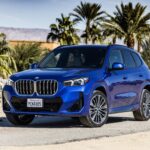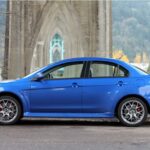The 1970s marked a significant turning point in American automotive history. Regulations, fuel shortages, and evolving consumer tastes dramatically reshaped the cars coming out of Detroit. While some lamented the end of the muscle car era, the decade also produced a fascinating mix of innovative designs and enduring classics. Let’s take a drive through some of the most memorable 1970s Cars that defined this era of automotive evolution.
One car often seen as a spiritual successor to the beloved ’57 Chevy was the Chevrolet Nova SS. Some enthusiasts considered the Nova SS the ’70s embodiment of that iconic model. However, the SS version met its demise in 1972, making the 1971 models highly sought-after by collectors and earning them a place in the “Chevy Muscle Hall of Fame.” These final editions represented the tail end of an era, just before significant shifts in the automotive landscape.
The late 70s saw some interesting models emerge that seemed to echo designs from earlier times. Chevrolet, for instance, released the 1978 Silver Anniversary Corvette, boasting a fastback reminiscent of the Stingray. Ford, not to be outdone in the nostalgia department, introduced the Mustang King Cobra. This model was a clear nod to the muscle car days, complete with bold stripes, a striking snake decal, though its engine output was a modest 122 horsepower, reflecting the changing performance priorities of the decade.
The Chevrolet Camaro, after a successful launch in 1967, experienced a downturn in 1972. That year also signaled the end of the Super Sport (SS) package for the Camaro. Road & Track magazine even published a eulogy of sorts for the Chevrolet Camaro SS 396, proclaiming the 1971 SS 396 as “the best car built in America in 1971.” The early 1970s were indeed a challenging period for automobiles, with all 70s cars grappling with new emissions regulations and the growing gas shortage. However, the Camaro staged a remarkable comeback just five years later. Sales surged to over a quarter of a million units, and the design proved so enduring it remained largely unchanged for the next 11 years. This resilience cemented the Camaro’s status as a true American icon.
Another notable 70s car that captured attention was the Chevy Monte Carlo, lauded for its “action and elegance in a sporty personal luxury package.” Exclusively offered as a coupe, the Monte Carlo came equipped with power front disc brakes, sophisticated Elm-Burl dash panel inlays, and a range of engine options starting with a standard 350cid V8 and culminating in the powerful SS454. Priced at $3,123, it presented a more affordable option compared to the $5,000 Ford Thunderbird. Interestingly, the Monte Carlo shared its platform with the redesigned 1969 Pontiac Grand Prix.
Buick’s Riviera had been a top seller in 1963, but by the late 60s, it was losing ground to the increasingly luxurious Ford Thunderbird. Buick responded by introducing a significantly redesigned Riviera in 1971. The new model was larger and bolder than its predecessors. Nicknamed the “boat-tail” for its distinctive rear styling, which drew inspiration from the split rear-window Sting Ray of ’63, the Riviera was both handsome and dramatic. With a base price of $5,251, it was positioned as a premium offering, exceeding the Thunderbird’s price. Buick finally had a flagship model that commanded industry attention and made these 70s cars a point of pride for the brand.
Ford’s new Granada, designed as a more compact and fuel-efficient alternative to the Ford Maverick, quickly rose to become the company’s best-selling car of the 70s. Meanwhile, Cadillac introduced the Seville, an “intermediate” luxury vehicle aimed at competing with European brands like Mercedes Benz. The Seville proved successful, achieving sales of 43,000 units.
The 1970s recession hit America hard, and Detroit felt the impact of American consumers increasingly drawn to higher-quality imports. AMC (American Motors Corporation) responded to these economic pressures with the Gremlin. This small, two-door hatchback was priced starting below $2,000. Offered in a palette of somewhat unappealing earth tones, the Gremlin is often remembered as one of the less aesthetically pleasing cars of the 1970s.
In a creative marketing move in 1972, AMC launched the ‘Levi’s Edition’ Gremlin, capitalizing on the denim craze sweeping America. This unusual car featured copper rivets and denim-like blue nylon upholstery on the seats and door panels, making it one of the more quirky and even comical 70s cars. AMC also introduced “The Machine,” a factory-modified 1970 AMC Rebel. “The Machine” was capable of a 14.4-second quarter-mile in stock condition. Designed as a competitor to the Pontiac GTO, the mid-sized 1970 Rebel Machine was also intended for regular street driving. Equipped with a four-speed manual transmission, the Rebel could accelerate from 0 to 60 mph in a brisk 6.4 seconds.
Visually more appealing were the 1973 Lincoln Continentals. These were the first Continentals to feature padded vinyl roofs and distinctive oval ‘opera’ windows, styling cues Lincoln retained throughout the rest of the decade.
Another pricey 70s car was the Lincoln Continental Mark IV. In 1972, it carried a price tag of $10,000, positioning it as a luxury competitor to Cadillac’s top models. Large and surprisingly quick, the Mark IV featured a newly designed body with “hunch-flanked” styling, a Rolls-Royce-esque grille, and a distinctive, albeit fake, spare-wheel cover. Road testers praised its power, luxury, and sheer size, with one remarking that the Mark IV’s hood “looks like an aircraft carrier landing-deck on final approach.” Standard features were generous, including air-conditioning, six-way power seats, power windows, antenna, and door locks.
Chrysler faced a significant sales decline of 34% with their 70s cars. In an attempt to reverse this trend, they introduced the 1975 Cordoba, the shortest Chrysler model since World War II. Marketed as “the new small Chrysler,” the Cordoba is perhaps best remembered for its television commercials featuring actor Ricardo Montalban, who famously lauded its “rich, Corinthian leather” interior.
The 70s also saw the 340 cubic inch-powered 1970 Plymouth Duster. This model was part of the trend towards smaller, more affordable cars. Based on the compact Plymouth Valiant and priced at just US$2,547, the 340 Duster delivered a 0-60 mph time of 6.0 seconds and a quarter-mile time of 14.7 seconds at 94.3 mph. This “reasonably fast” compact muscle car featured a firm, slightly lowered suspension. The Duster was a commercial success, and Hot Rod magazine hailed it as “one of the best, if not the best, dollar buy in a performance car” in 1970.
By the early 1970s, the increasingly large Cadillac models were struggling with fuel economy, averaging only 12 mpg. The 1974 energy crisis exacerbated the situation, making the now-overweight Cadillac lineup a vulnerable target. Cadillac’s response was the Seville, launched in 1975. The Seville was intentionally designed to be more European in size, ride, handling, and fuel efficiency. It featured minimal ornamentation and a hood that was significantly shorter than other Cadillacs. The automotive press lauded it as the “best Caddy for 26 years.” With a launch price of $13,700, $6,000 less than a comparable Mercedes, the Seville’s sales success caused concern among German automakers. Fortune magazine recognized the Seville as one of the U.S.’s best-designed products, marking it as a high-quality 70s car.
By 1976, Cadillacs had become so large that they struggled with cornering, achieved a mere 13 mpg, and their acceleration off the line was comparable to an M24 tank. Despite a massive 500cid V8 engine, the 1976 Eldorado produced a meager 190 horsepower, with a top speed of only 109 mph. Change was inevitable, and Cadillac’s initial response had been the ’75 Seville. However, the ’76 Eldorado marked the end of an era for another reason – it was the last American convertible. When Cadillac announced the convertible would be discontinued at the end of 1976, there was a rush to purchase the final 200 models. People even attempted to jump the line by claiming distant kinship to Cadillac’s founder. One 72-year-old man in Nebraska bought six of them. A significant American automotive tradition quietly faded away. Demand for these final convertibles was so high that some changed hands for as much as $20,000, nearly double the original list price. Cadillac convertibles… truly memorable 70s cars.
The 1970s were a decade of dramatic shifts in the automotive world. From the last gasps of the muscle car era to the rise of fuel-efficient and more luxurious models, 70s cars reflect a period of significant change and adaptation in the American auto industry. These vehicles, whether iconic or quirky, continue to capture the imagination of car enthusiasts and serve as a reminder of a fascinating decade in automotive history.

